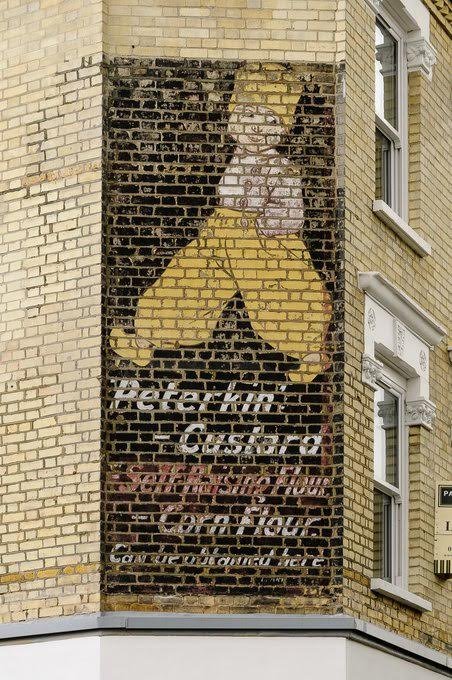London’s high walls still have pieces of almost hidden urban archaeology
By Xindi Wei
From births and deaths to bombs and whisky, ghost signs are the vanishing legacy of our streets.
London’s high walls still have traces of Alf the Purse King and Bonsoir Pyjamas – pieces of almost hidden urban archaeology, telling unique tales of everyday life in the capital.
In a “GhostSignsWorldCup” Final, the public has been voted for the best ghost sign, in a face-off between North and South London.

And Peterkin Custard, a ‘ghost’ sign on St. John’s Hill, Battersea, has been officially declared as London’s best.
It claimed the title after six gruelling rounds of knockout competition on Twitter, narrowly beating Bloom’s Pianos on Kingsland Road, Shoreditch, in the final.
Sam Roberts said: “It’s a worthy winner and I bet the signwriter that painted it in 1920s would be proud to know it went on to great things.
“The sign is included on Wandsworth council’s local heritage list, and so this charming Dutch boy in baggy trousers and clogs should keep on walking for years to come.”
Cllr Richard Field, Mayor of Wandsworth also commented: “These signs from yesteryear may be fading a little but they certainly add a colourful touch to many neighbourhoods.”
Both ghost signs will feature in an upcoming book, Ghost Signs: A London Story, written by Sam Roberts and Roy Reed, who have also hosted the competition.
The book will focus on the hand-painted relics of London’s advertising past, showcasing around 250 of London’s most impressive and historically significant ghost signs, geo-located and transcribed, with details of what use they served and how they came to exist.
It will also be accompanied by a detailed online map, locating all the signs featured and many more, with itineraries for those wanting to venture out and discover the signs in person.
The book will be released in November this year after a kickstarter campaign raised almost double the £15,000 target.
